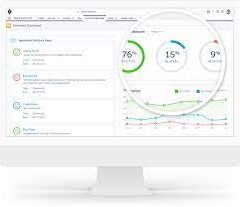On October 1st, 2024, Salesforce experienced a significant outage impacting over 80 instances, causing core services to slow to a crawl. The outage, which began around 6:30 UTC, remained unresolved over 8.5 hours later, with the root cause still unknown at that time.
The outage has been particularly damaging, as Salesforce emphasizes trust as one of its core values, promoting transparency and reliability in its service delivery. While the Salesforce Trust website, which provides real-time system status updates, remained operational, some users reported difficulty accessing it when they needed outage details, adding to their frustration.
This disruption has been a major blow to organizations that depend on Salesforce for essential business functions such as customer relationship management (CRM), sales pipelines, and workflow management.
Key Facts About the Outage
- Unknown Cause: As of now, the cause of the outage remains unclear. Online forums have speculated on potential security-related issues, but no official statement has confirmed this.
- Growing Impact: While some users have seen their instances recover, the number of reported issues continues to rise. Salesforce teams have performed health checks and issued an emergency update to mitigate the problem.
- Performance Problems Persist: Users are encountering issues, primarily related to dashboard and report failures, as well as error messages with little useful guidance. These disruptions have severely affected key functionalities, causing delays in operations.
Am I Affected by the Salesforce Downtime?
If you’re unsure whether your instance is affected, you can check the real-time list of impacted cases on the Salesforce Trust website. To do this, identify your organization’s instance (e.g., NA54, EU13) and compare it to the affected list. However, the Trust site itself has experienced intermittent outages during the incident.
Customers have reported issues such as:
- Failure to load dashboards and reports
- Cryptic error messages offering little guidance
- Automated jobs failing to run at scheduled times
If you’re encountering these problems, your Salesforce instance is likely impacted.
How Salesforce is Responding
Salesforce has initiated an emergency release in phases, with the first phase nearly complete. Afterward, validation checks will be performed to assess system stability. While some customers have reported that their instances have recovered, others continue to experience severe issues.
Salesforce Support has provided general troubleshooting advice, such as using alternative browsers or clearing caches, but many users have found this ineffective, as the root cause lies within Salesforce’s infrastructure, not user-side configurations.
What to Do Now
- Check Your Instance: Visit the Salesforce Trust website for updates on your specific instance.
- Prepare for Continued Disruptions: If your business relies heavily on Salesforce for dashboards or reports, have contingency plans in place in case the outage persists.
- Monitor for Updates: Stay informed via official Salesforce channels and user forums, where updates and potential workarounds are shared.
Looking Ahead
Although the root cause of the outage remains undetermined, Salesforce has committed to providing regular updates. Customers are encouraged to monitor the Salesforce Trust website and communicate with support teams. Once the cause is identified, Salesforce plans to release a detailed report on the incident and how they will prevent future occurrences.
Conclusion
Salesforce’s outage on October 1st has caused widespread disruption for businesses globally. While emergency updates are underway and some instances are recovering, full resolution may take time. In the meantime, staying updated and preparing for intermittent issues is critial for those who rely on Salesforce for their daily operations.
Stay tuned for further updates as Salesforce continues working to restore full functionality across all affected instances.













